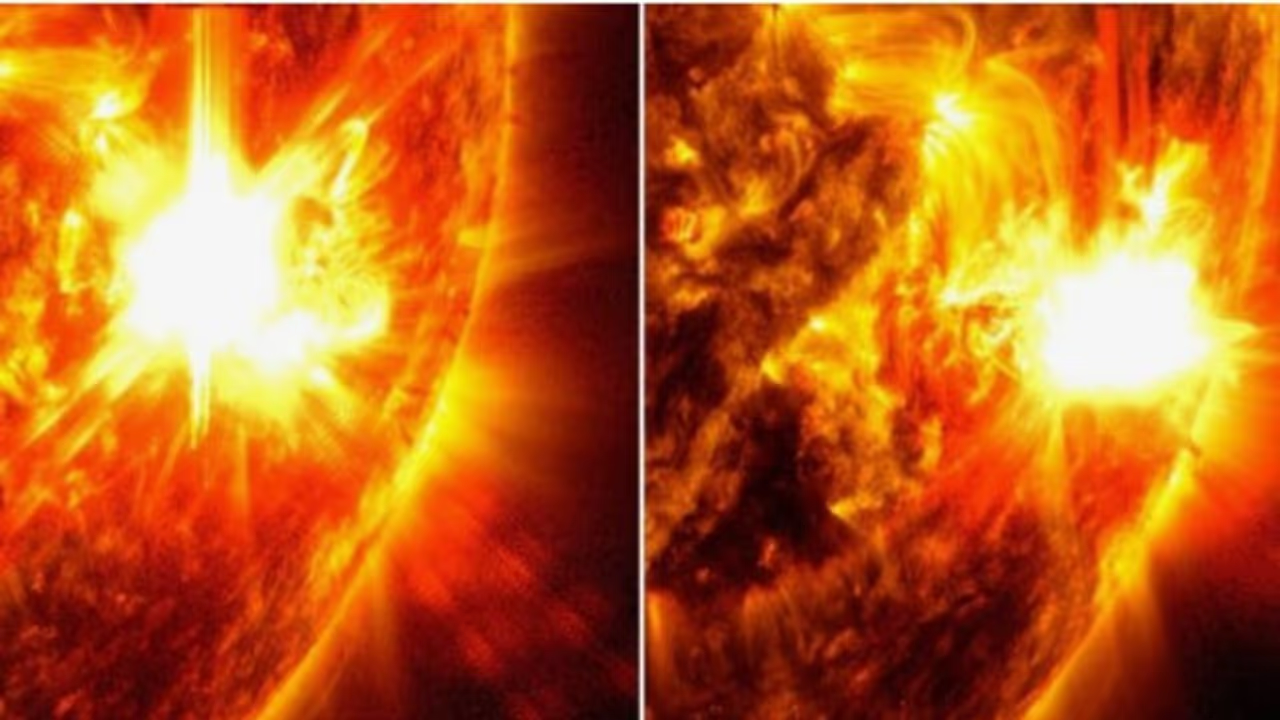A powerful solar flare has triggered global alerts, with warnings of GPS glitches, radio blackouts, and stunning auroras visible across the UK. More solar storms may follow as Earth faces peak solar activity.
A massive solar storm is barreling toward Earth after the Sun’s most active region, sunspot AR4087, unleashed a powerful X2.7-class solar flare, the most intense of 2025 so far.

The flare, recorded earlier this week, has prompted urgent warnings from NASA, NOAA, and global space weather agencies, as it could cause radio blackouts, GPS disruptions, and vivid auroras in regions far beyond the Arctic Circle.
The X2.7-class flare belongs to the most extreme category of solar flares and was strong enough to cause temporary radio blackouts in the Middle East, according to the U.S. National Oceanic and Atmospheric Administration (NOAA). These high-energy bursts travel at the speed of light, reaching Earth in just eight minutes, and interact with the planet’s ionosphere, affecting high-frequency communication, aviation signals, and satellite operations.
“This is getting intense,” space weather experts warned, as the flare is just the beginning. Several more sunspot regions on the Sun’s Earth-facing side are poised to erupt, with AR4087 still rotating into full view.
What’s causing the storm? Enter the solar maximum
The Sun is currently in the peak phase of its 11-year solar cycle, known as the solar maximum. During this period, the Sun’s magnetic poles flip, fueling a surge in sunspot activity and solar storms. The ongoing 2025 cycle is already proving more intense than the previous one in 2014, and experts believe we may only be halfway through.
This increase in solar output means more frequent and more powerful flares and coronal mass ejections (CMEs), giant clouds of solar plasma capable of triggering geomagnetic storms that can disturb power grids, navigation systems, and even pose a radiation threat to astronauts in orbit.
Disruptions and dangers: what’s at stake?
NASA warns that if AR4087 or any of the other four active sunspot groups erupt again, there could be glitches in global satellite systems, navigation errors in GPS, and further radio communication blackouts, particularly on the sunlit side of the Earth.
The airline and maritime industries are on high alert, as solar radiation can interfere with long-distance communication and even in-flight electronics, especially near the polar routes. While most of the public won’t notice major disruptions, experts suggest being prepared for minor outages or delays in navigation and communication.
Light show alert: auroras across the UK and Ireland
The good news? This same geomagnetic chaos fuels one of nature’s most beautiful phenomena: the Northern Lights (Aurora Borealis). The UK Met Office has forecast enhanced auroral activity on 22 May, with visibility extending across Scotland, England, Ireland, and possibly northern France.
Skywatchers are encouraged to look north after dark, especially in areas with clear skies and low light pollution, for the best chance to see green and purple ribbons of light dancing across the sky.
What’s next and how to stay ready
With up to five sunspot groups rotating across the Sun’s Earth-facing hemisphere, more X-class flares or CMEs are highly likely in the coming days. NASA’s Solar Dynamics Observatory and NOAA’s Space Weather Prediction Center will continue tracking solar activity, issuing alerts as needed.
While this event may not lead to widespread damage, it serves as a reminder of the Sun’s incredible power. For the general public, offline maps, backup batteries, and following official weather and space channels can go a long way in staying informed and prepared.
And for those with a camera and a sense of wonder? Now might be your best shot at capturing the aurora of a lifetime, right from your backyard.


